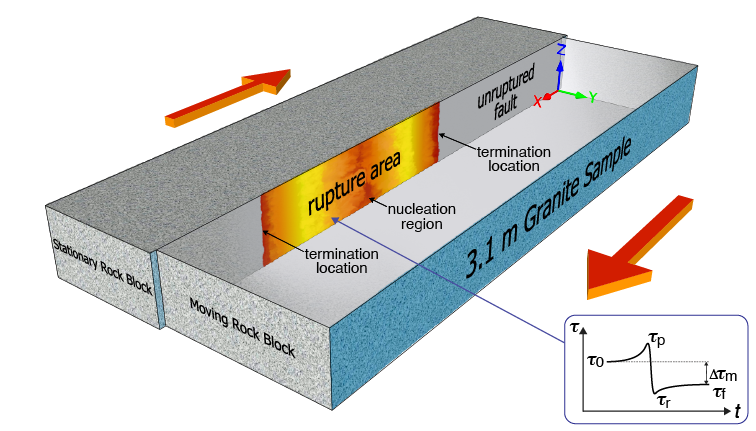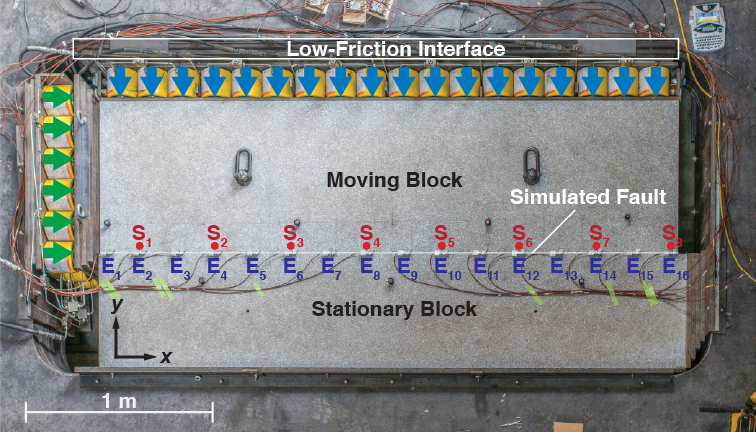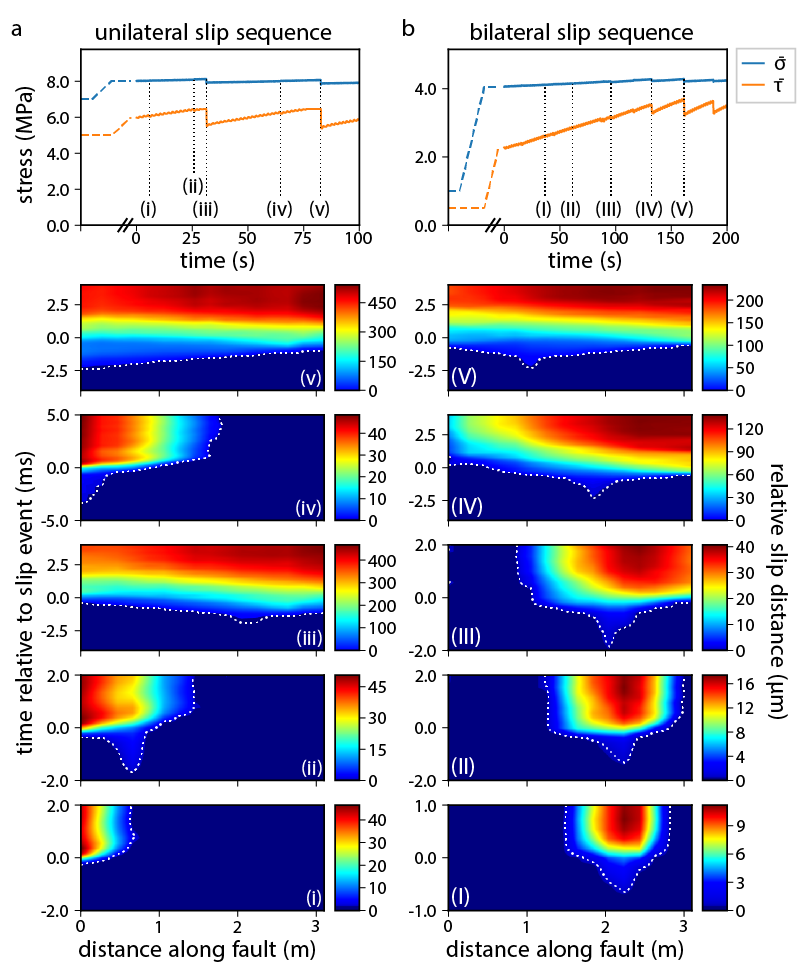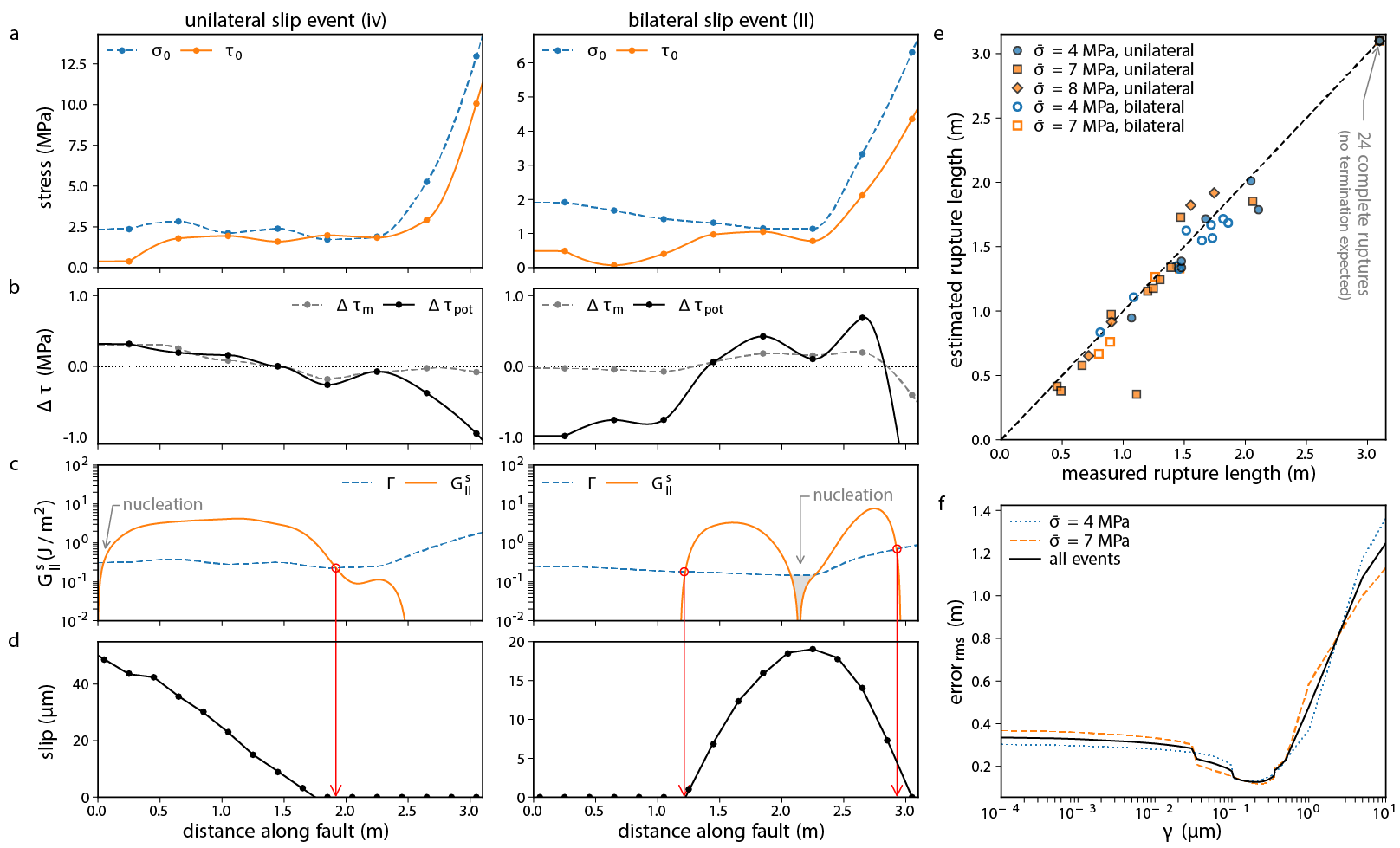Publication: Rupture Termination in Laboratory-Generated Earthquakes
Our lab’s first paper about the large-scale laboratory earthquake experiment at Cornell is published on GRL. We generated laboratory earthquake ruptures that nucleate, propagate, and terminate within the 3-m long saw-cut granite fault.

Local relative displacement across the fault and local 2D strain tensor components were recorded by Eddy-current sensors and strain gage rosettes, respectively. Normal and shear loading were applied by separate arrays of hydraulic cylinders that connected to separate pumps. The averaged normal and shear loading are converted from the pressure measurements near the pumps.

In typical experiments, normal stress was set to a prescribed level and was kept approximately constant. Shear stress was then increased at a roughly constant rate to induce slip events. This procedure produces sequences of regular, periodic stick-slip events that rupture the entire simulated fault, yet occasional changes of the normal stress level create inhomogeneous distributions of normal and shear distributions that support sequences of contained slip events.

This work indicates that rupture termination is primarily controlled by the distribution of “potential stress changes”, which is the stress on the fault in excess of the residual strength. Positive potential stress change indicates that the fault rocks are stressed to a level where, if triggered, a slip event cold release some of the stored elastic strain energy and fuel the earthquake.
Also, the the LEFM-based model originally developed for experimental observations on smaller PMMA samples is applicable to our granite samples, independent of size and material.

Through LEFM, we showed how the balance between energy release rate and fracture energy governs the termination of a rupture. Fracture energy is essentially constant compared to the orders-of-magnitude variations in energy release rate in our experiments, so ruptures terminate because they run out of available strain energy rather than encountering barriers. In our experiments, small events do little to relieve stress or reduce the danger of a larger quake. Rather, they reorganize stress to allow for larger, complete-rupture events.

The utility of the model for both 3 m rock experiments and 200 mm PMMA experiments, and the similarity of fracture energy coefficient between the two materials, verifies the adequacy of PMMA as an analog to crustal rock in this context. Finally, the LEFM-based model provides a framework for linking friction properties and on-fault stress conditions to observable earthquake sequences.
Ke, C.-Y., McLaskey, G. C., & Kammer, D. S. (2018). Rupture Termination in Laboratory‐Generated Earthquakes. Geophysical Research Letters, 45(23), 12784–12792. doi: 10.1029/2018GL080492